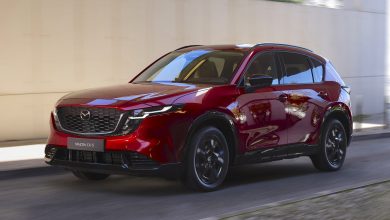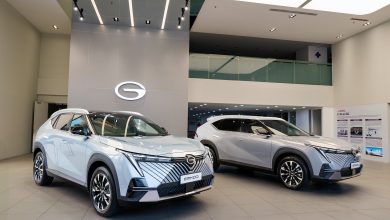Porsche uses just software to get better traction control

Porsche Engineering has rewritten the rule book in traction, especially in the snow with a new torque control system for all-wheel drive SUVs, which offers maximum stability and safety in any situation, without installing additional sensors on board, just only by software. Therefore, all four wheels are driven with optimum force in a few milliseconds and stabilize the vehicle.
The next generation Cayenne electric and Macan electric will be using this new system.
The software was developed not only by Porsche Engineering, but also calibrated within test drives organized over two winters. The Germans say that it is suitable for different engine configurations, the solution being given priority for the company’s future electric SUVs.

Imagine a situation that every driver is afraid of: a snow-covered road, a surprisingly tight curve and hardly any time for braking. With a normal vehicle, a dangerous loss of control is a very real possibility. The rear can swing out of the way, causing the car to spin and eventually reach a ditch.

However, in the tests carried out by Porsche everything went differently: the driver turns the steering wheel and the SUV confidently approaches the curve and this without slowing down! A glance at the speedometer indicating a speed of 80 km/h removes all doubts that it is not the ordinary vehicle. The SUV used is a vehicle with all-wheel drive, created by four engines, one for each wheel.
So far, this propulsion technology has been seen only in the rover sent to Mars, but now it has arrived in today’s world: Porsche Engineering has recently developed a special torque control system for electric SUVs.
“It was a truly pioneering work. We had to design a lot of things from scratch, “said Dr. Martin Rezac, team leader for Porsche Engineering’s function development.
There was also an additional challenge: the driving characteristics had to be optimized exclusively through software. Porsche engineers could not install any additional sensors and had to use existing control devices. The task, in short, was essentially to organize a stable drive through an application.
Dr. Martin Rezac, Porsche Engineering
A vehicle with electric all-wheel drive with multiple engines has a fundamental advantage over those with petrol or diesel engines: the front and rear axles, in fact all four wheels, have their own electric motors, allowing an extremely variable power distribution. drive. “It’s almost like you have a separate accelerator pedal for each axle or wheel,” explains Ulf Hintze of Porsche Engineering.
In a traditional all-wheel drive vehicle, there is only one engine in operation, the power of which is distributed between axles through a central differential. Usually, the ratio of the couple is fixed: one third in front and two thirds in the rear, for example. The report can theoretically be modified, but an additional mechanical device is required for this (multi-disk clutch with friction), which usually works quite slowly. Instead, in an electric vehicle, the torque is purely electronically controlled, a solution that works considerably faster than mechanical clutches. As a result, every millisecond, the intelligent software distributes forces so that the vehicle always behaves neutral.
And Porsche Engineering has just developed such a torque control system for all-wheel drive electric SUVs. The software can be used for different constellations and configurations of the treadmill, as well as for other types of electric vehicles. In general, the development starts with the basic distribution, ie software that controls how much power is transmitted on the front and rear axles respectively. As for the linear drive and the balanced weight scenario, for example, a 50/50 distribution would make sense. If the driver accelerates, the software automatically switches to full traction on the rear wheels only or on the front wheels in the vicinity of a dangerous curve.
“This makes the vehicle more visible, even for passengers. Since the optimization is done completely electronically, theoretically it would even be possible to offer the driver different configurations: one way for sports cars airworthiness, another for a smooth cruise,” says the function developer Martin Rezac.
The second task of the control software is to adjust the torque to the wheel speed. Algorithms follow a simple objective: all wheels should spin at the same speed. This is easy to do on a dry highway, but it is much more difficult when driving on a snow-covered road. If the front wheels are facing an ice surface, for example, they could – without electronic intervention – begin to rotate. But the torque control system immediately detects the suboptimal situation and directs the torque to the wheels that turn slower and have more grip, in fractions of a second.
There is something similar in the world of cars with internal combustion engines – the limited slip differential with speed sensitivity, also known as the Visco Lok brand. In this component, the transmission wheels and hydraulics ensure that no one wheel returns faster than the others. But mechanical solutions are slow, as mentioned earlier. Instead, in an electric SUV, the software assumes the role of the differential – with much faster reactions and, naturally, completely wear-free!
The third and most important function of the new torque control system is its ability to control lateral dynamics, that is, the ability to neutralize critical driving situations such as the one mentioned at the beginning: a slippery surface, a narrow curve and a high speed. . An uncontrolled vehicle would quickly have an understeer in this situation. In other words, the driver initiates the turn, but the vehicle slides in a straight line, without slowing down. The control software in the electric SUV used for testing immediately put an end to the subversion. In a left-hand turn, it would brake the left rear wheel and accelerate to the right until a neutral driving situation was restored. The system takes similar measures when oversight occurs (the back of the car starts to swing). In the meantime,
“It feels as if you are driving a vehicle on a track – an SUV behaves with the agility of a sports car”, summarized the effect of Ulf Hintze.
Ulf Hintze, Porsche Engineering
An observer of the driving status / situation (simply referred to as an “observer” by Porsche engineers) is involved in all intervention decisions. This software module continuously monitors a number of factors: how powerful the steering wheel was, how much the driver accelerates and how much the vehicle spins around its vertical axis. The data is provided by a yaw sensor. This real state is compared to a dynamic vehicle model that represents the target state under normal conditions. If the observer detects deviations, for example, caused by understeer or oversight, the software created intervenes. If the vehicle does not approach the curve as quickly as expected from the current steering position and travel speed, the individual wheels are selectively braked until the steering is stabilized.
The same effect can be achieved with a traditional electronic stability control (ESP) system – but in a vehicle with electric all-wheel drive this safety system can do much more: while a traditional ESP system can only handle braking, in an electric vehicle the individual wheels can also be accelerated. This “pulls” the vehicle back onto the right lane without losing speed. The intervention is also less shaken than in the case of a hydraulic ESP system.
“Developing the vehicle observer was the biggest challenge. The fact that so much development work was needed here goes back to a fundamental problem: a car knows relatively little about its own condition. He does not know his speed; it can be derived only from the speed of the wheels, which is difficult, especially on ice and snow. Therefore, the observer must use additional information about longitudinal and lateral acceleration to estimate speed. Weight distribution information is just as vague. While the suspension picks up the load on the individual wheels, even this information offers simple clues than some with certainty. If the dampers report the increased weight on the rear axle, for example, it may be due to the vehicle parked on a slope – or simply heavily loaded. The observer must estimate the important parameters of the vehicle as quickly as possible, and for this some unusual sources of information are used. The torque control system communicates with a sensor that detects the inclination of the car, for example, which is usually used for automatic headlight adjustment,”Rezac explained.
The entire software package not only had to be developed, but calibrated within test drives under real operating conditions. And all this in a very short period of time: there were only two winters available where fine tuning could be tested on an frozen river. It has been shown, among other things, that the great advantage of electric motors – their rapid reaction time – has sometimes led to unwanted side effects.
“Electric motors respond so quickly that vibration can occur,” says Hintze, who conducted tests with his team. “In some cases, the software transferred the torque between the axes at increasingly faster intervals, which even led to a generation of audible sensing speeds. Due to the close collaboration between the calibration team and the development team around Martin Rezac, however, we were able to quickly put an end to this accumulation by modifying the software. ”
This detailed work has been done exactly where the challenge lies in such projects. Because the software will be used in a standard vehicle, it should be tested for every conceivable situation, however unlikely it may seem. If the sensor reports faulty data, for example, the torque control system must decide whether it is still allowed to operate even without the data source or must be switched off.
Another obstacle was the limitations of electric propulsion technology. It may be the case, for example, that individual electric motors cannot transmit the available battery power. Function developers had to take these limitations into account as well. “The control interval collapses in this case,” says Hintze. “Instead of 100% torque on one axis, maybe only 60% could be available. And the couple’s control system has to take this into account as well. ”
But everyone involved is convinced: the result was well worth the effort, as Porsche electric vehicles with up to four engines will soon show their exotic reputation. And many drivers will be grateful that they can drive through the snow as a train tracks.




